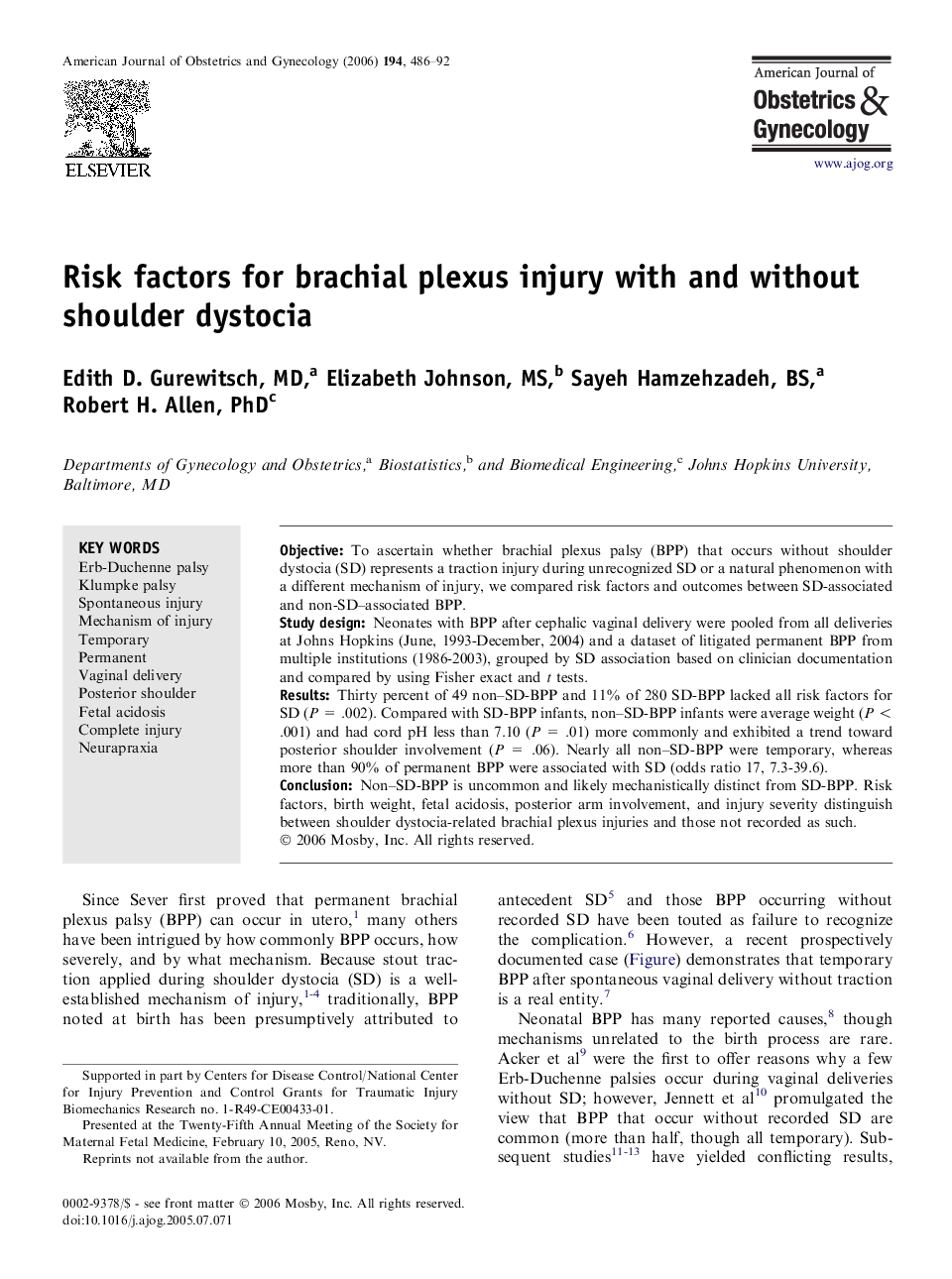| Article ID | Journal | Published Year | Pages | File Type |
|---|---|---|---|---|
| 3441473 | American Journal of Obstetrics and Gynecology | 2006 | 7 Pages |
ObjectiveTo ascertain whether brachial plexus palsy (BPP) that occurs without shoulder dystocia (SD) represents a traction injury during unrecognized SD or a natural phenomenon with a different mechanism of injury, we compared risk factors and outcomes between SD-associated and non-SD–associated BPP.Study designNeonates with BPP after cephalic vaginal delivery were pooled from all deliveries at Johns Hopkins (June, 1993-December, 2004) and a dataset of litigated permanent BPP from multiple institutions (1986-2003), grouped by SD association based on clinician documentation and compared by using Fisher exact and t tests.ResultsThirty percent of 49 non–SD-BPP and 11% of 280 SD-BPP lacked all risk factors for SD (P = .002). Compared with SD-BPP infants, non–SD-BPP infants were average weight (P < .001) and had cord pH less than 7.10 (P = .01) more commonly and exhibited a trend toward posterior shoulder involvement (P = .06). Nearly all non–SD-BPP were temporary, whereas more than 90% of permanent BPP were associated with SD (odds ratio 17, 7.3-39.6).ConclusionNon–SD-BPP is uncommon and likely mechanistically distinct from SD-BPP. Risk factors, birth weight, fetal acidosis, posterior arm involvement, and injury severity distinguish between shoulder dystocia-related brachial plexus injuries and those not recorded as such.
